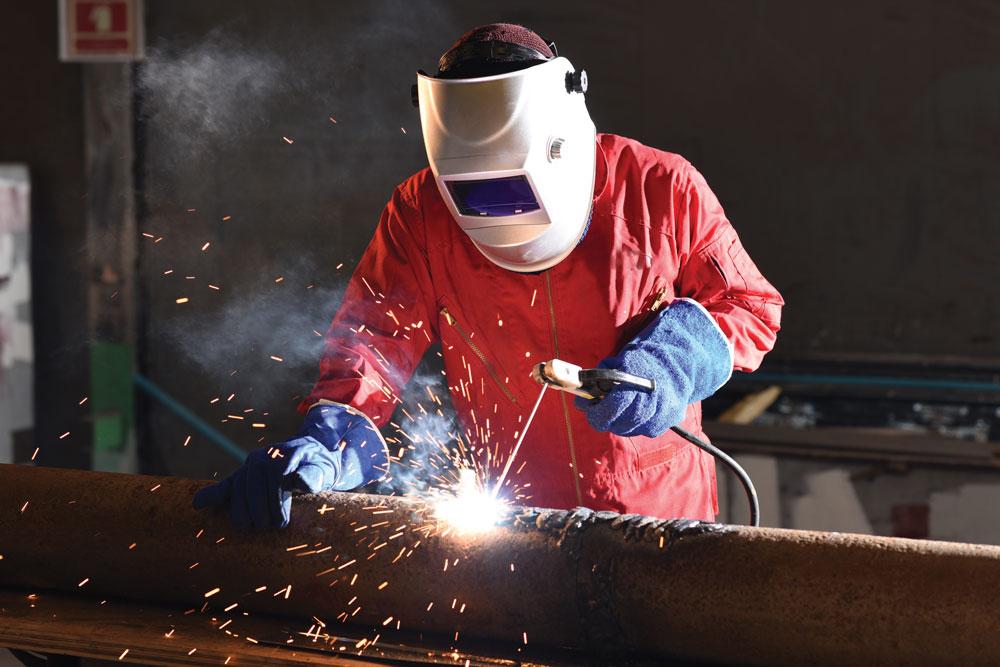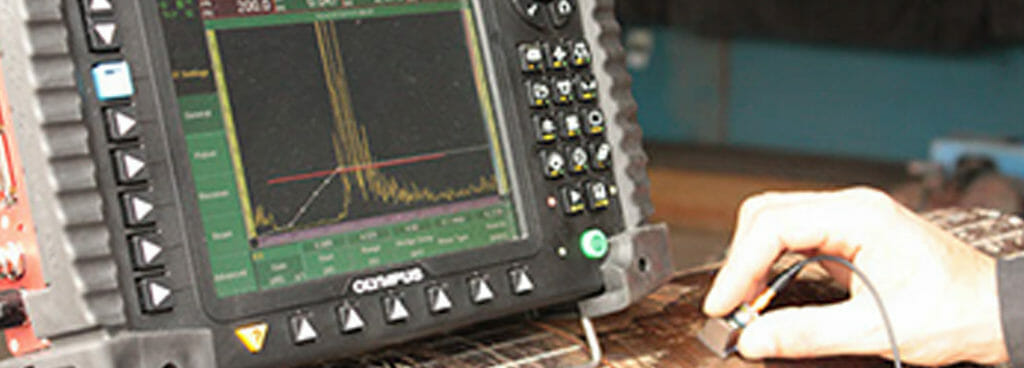The Ultimate Overview to Welding Inspection Racine for Industrial Requirements
The Ultimate Overview to Welding Inspection Racine for Industrial Requirements
Blog Article
Cutting-edge Approaches to Fillet Weld Assessment and Screening: Enhancing Weld Quality and Compliance Criteria
In the realm of welding, the quality and honesty of fillet welds play an essential function in ensuring the architectural sturdiness and integrity of different industrial parts. With the consistent drive for enhanced effectiveness and conformity with rigid requirements, the exploration of innovative approaches to fillet weld assessment and testing has actually ended up being essential.
Advanced Non-Destructive Screening Methods
Using state-of-the-art innovations, advanced non-destructive screening methods play a critical function in ensuring the integrity and high quality of fillet welds. These approaches, such as phased array ultrasonic screening (PAUT) and magnetic bit screening (MPT), offer comprehensive insights right into the weld's interior framework without causing any type of damages to the material. PAUT, for instance, uses numerous ultrasonic elements to examine the weld from numerous angles, providing an extensive visualization of possible defects like lack of fusion or splits.
Similarly, MPT works in spotting surface-breaking flaws by using a magnetic area and iron particles to the weld area. This technique is especially useful for determining discontinuities that may jeopardize the weld's stamina. By utilizing these innovative non-destructive screening strategies, weld inspectors can accurately assess the quality of fillet welds, guaranteeing compliance with market requirements and guidelines. The capacity to identify defects early not just enhances weld quality but likewise stops expensive rework or failures in structural integrity, highlighting the relevance of these cutting-edge screening strategies in welding inspections.
Robotics and Automation in Inspection
The assimilation of robotics and automation has actually transformed the evaluation process for fillet welds, enhancing performance and precision in high quality assessment. Robotics offer specific control and repeatability in checking welds, making sure reliable and regular results. Automated systems can be configured to follow certain evaluation courses, guaranteeing detailed protection of welds and minimizing the danger of human error.
Robot assessment systems outfitted with sophisticated sensing units can discover and gauge weld functions with high accuracy, offering thorough data for analysis. These systems can identify defects such as fractures, absence of blend, and porosity, making it possible for timely rehabilitative actions to be taken. In addition, robotics and automation enable for real-time information collection and analysis, offering instant responses to operators and helping with fast decision-making procedures.
Furthermore, making use of robotics and automation in fillet weld assessment boosts overall productivity by minimizing examination times and increasing evaluation throughput. By improving the inspection process, makers can make sure weld top quality and conformity criteria are met efficiently, ultimately resulting in cost savings and improved item high quality.
Using Artificial Knowledge for Evaluation
Man-made knowledge plays an essential function in improving the effectiveness and accuracy of evaluation in fillet weld evaluation processes. By harnessing the power of AI, examiners can streamline the analysis of weld high quality and compliance standards, resulting in much more dependable and precise results. AI formulas can swiftly refine large amounts of information from weld examinations, identifying flaws or variances that may be challenging to relate to the nude eye. This advanced technology makes it possible for real-time surveillance of weld quality, enabling immediate rehabilitative activities to be taken if any kind of problems are spotted.
Furthermore, AI systems can gain from previous evaluation information, continually enhancing their capacity to recognize potential flaws and inconsistencies in fillet welds. This flexible learning ability enhances the general quality control procedure, lowering the possibility of human error and making sure that welds fulfill the required standards. By integrating expert system right into fillet weld evaluation, industries can achieve higher levels of effectiveness, uniformity, and conformity in their examination techniques.
Portable Devices for On-Site Inspection
 Enhancing area inspection performance, the adoption of portable tools reinvents on-site analysis procedures for fillet welds. These devices offer flexibility and benefit, enabling assessors to perform comprehensive evaluations in different places, consisting of remote or difficult atmospheres. Mobile devices such as ultrasonic testing devices, magnetic particle inspection tools, and electronic radiography systems supply real-time information and high-resolution imaging abilities, allowing quick decision-making and immediate feedback on weld quality.
Enhancing area inspection performance, the adoption of portable tools reinvents on-site analysis procedures for fillet welds. These devices offer flexibility and benefit, enabling assessors to perform comprehensive evaluations in different places, consisting of remote or difficult atmospheres. Mobile devices such as ultrasonic testing devices, magnetic particle inspection tools, and electronic radiography systems supply real-time information and high-resolution imaging abilities, allowing quick decision-making and immediate feedback on weld quality.One significant advantage of mobile devices is their capability to enhance assessment procedures, decreasing downtime and enhancing overall performance. Assessors try this out can quickly carry these tools to different work websites, getting rid of the need for transferring heavy equipment or elements to off-site facilities. In addition, the transportability of these devices promotes cost-effectiveness by decreasing transport costs and accelerating examination timelines.
In addition, using portable devices for on-site evaluation promotes positive high quality control steps, as inspectors can without delay determine and address any kind of possible welding issues or disparities. By including these ingenious modern technologies into on-site inspection methods, welding professionals can ensure conformity with sector requirements and enhance weld quality, ultimately resulting in improved architectural integrity and security in numerous welding applications.
Combination of Data Monitoring Solution
Having enhanced on-site examination procedures through the use of portable tools, the following phase entails the smooth combination of information monitoring read the article systems to even more enhance performance and data evaluation capabilities in fillet weld assessment and screening. Welding Inspection Racine. By incorporating data monitoring systems right into the inspection procedure, organizations can enhance data collection, storage space, and analysis. This combination enables for real-time surveillance of weld quality, immediate identification of flaws, and timely decision-making to fix any type of issues that might arise during the examination process
The integration of information management systems enables seamless interaction in between various stakeholders included in the evaluation process, cultivating cooperation and improving general high quality control measures. Eventually, the assimilation of information monitoring systems serves to elevate the criteria of fillet weld examination and testing, guaranteeing compliance with sector regulations and improving weld top quality.
Conclusion
In final thought, cutting-edge methods to fillet weld examination and testing have substantially boosted weld quality and compliance criteria. Advanced non-destructive screening methods, robotics, automation, expert system, portable tools, and data administration systems have actually changed the way weld inspections are carried out. By utilizing these modern technologies, industries can make certain that welds satisfy the called for high quality requirements and laws, inevitably improving general efficiency and security in welding processes.

By utilizing these innovative non-destructive testing methods, weld assessors can accurately assess the quality of fillet welds, ensuring compliance with see page industry criteria and laws. Portable devices such as ultrasonic testing devices, magnetic bit inspection tools, and digital radiography systems give real-time information and high-resolution imaging abilities, making it possible for quick decision-making and immediate comments on weld top quality.
Having actually optimized on-site evaluation procedures via the application of portable tools, the following phase involves the seamless combination of data administration systems to better boost efficiency and data analysis capabilities in fillet weld evaluation and testing (Welding Inspection Racine). Ultimately, the assimilation of data management systems serves to raise the requirements of fillet weld assessment and testing, making sure conformity with market guidelines and improving weld high quality
 In conclusion, innovative strategies to fillet weld inspection and testing have considerably improved weld quality and conformity requirements.
In conclusion, innovative strategies to fillet weld inspection and testing have considerably improved weld quality and conformity requirements.Report this page